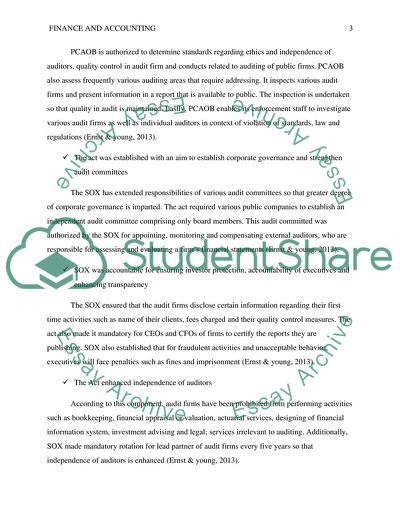Cite this document
(Sarbanes-Oxley Act of 2002 Research Paper Example | Topics and Well Written Essays - 2000 words, n.d.)
Sarbanes-Oxley Act of 2002 Research Paper Example | Topics and Well Written Essays - 2000 words. https://studentshare.org/finance-accounting/1844613-sarbanes-oxley-act-of-2002
Sarbanes-Oxley Act of 2002 Research Paper Example | Topics and Well Written Essays - 2000 words. https://studentshare.org/finance-accounting/1844613-sarbanes-oxley-act-of-2002
(Sarbanes-Oxley Act of 2002 Research Paper Example | Topics and Well Written Essays - 2000 Words)
Sarbanes-Oxley Act of 2002 Research Paper Example | Topics and Well Written Essays - 2000 Words. https://studentshare.org/finance-accounting/1844613-sarbanes-oxley-act-of-2002.
Sarbanes-Oxley Act of 2002 Research Paper Example | Topics and Well Written Essays - 2000 Words. https://studentshare.org/finance-accounting/1844613-sarbanes-oxley-act-of-2002.
“Sarbanes-Oxley Act of 2002 Research Paper Example | Topics and Well Written Essays - 2000 Words”. https://studentshare.org/finance-accounting/1844613-sarbanes-oxley-act-of-2002.


